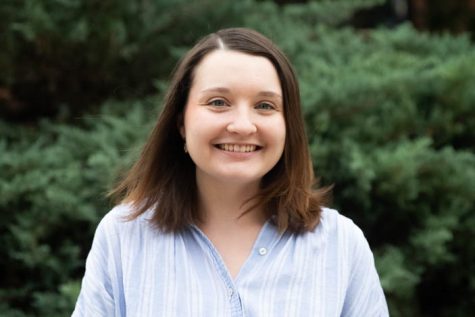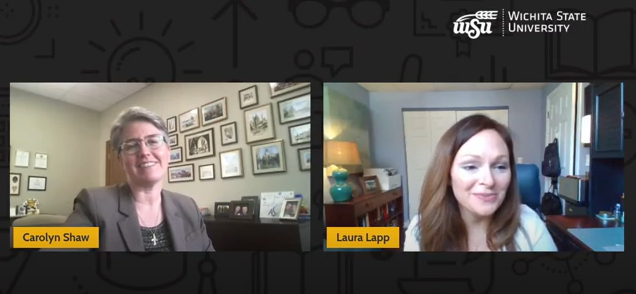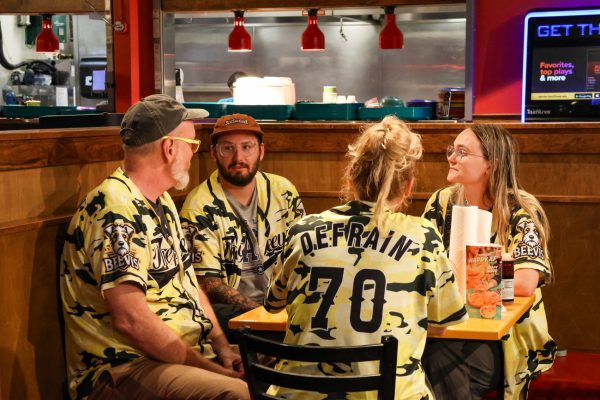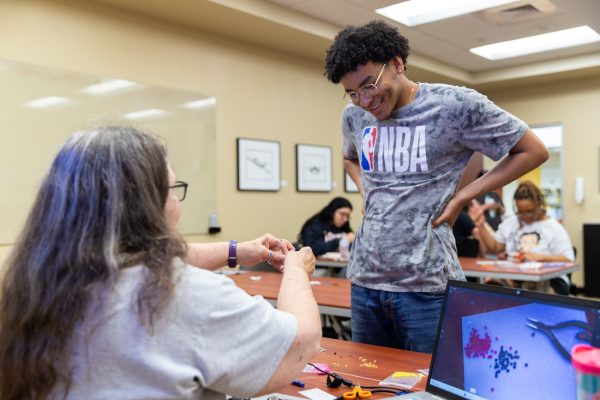Laura Lapp discusses sustainability efforts in colleges across the country
Laura Lapp works for Chartwells Higher Education Dining Services. She spoke about how Chartwells is going green.
Laura Lapp is the vice president of sustainability and culinary services at Chartwells Higher Education Dining Services. She is a registered dietitian and has been working for Chartwells for 15 years, and for the last five years has been leading the culinary and sustainability initiatives in the organization.
“We’ve really come full circle, now our culinary teams are thinking about all of these components and pieces of how a meal comes together and what’s represented on that plate,” Lapp said.
Chartwells culinary commitment is to serve functional foods with religious accommodation and that is also allergen friendly. They source responsibly and locally, with small batch cooking, authentic flavors and ethnic cuisine.
“It’s a really great time for them to learn a lot of habits that they can take with them into adulthood,” Lapp said. “What we have found is that students are seeking out these functional types of ingredients within their meal choices because they want to perform well in school and perform well in sports and activities.”
Lapp said that food insecurity plays a critical role on graduation and retention rates on campus and influences how well a student does in classes, and Chartwells wants to be part of the solution. They provide economic support directly to campuses and increase access to food. They set up a notification app to notify students who signed up when there is leftover food that they can pick up for dinner or lunch.
As an organization, Lapp said they are trying to reduce single use plastics. With leftover food, they use the ‘waste not’ tool in kitchens to record what exactly is being wasted and retrain associates if needed to reduce food waste.
“Every time we send food waste directly to landfill, it has an increasingly negative effect on carbon emissions . . . everytime we put food in the garbage we are throwing away our money as much as we are throwing away the resources that went into producing that food,” Lapp said.
While recycling correctly is confusing and challenging, Chartwells is looking for alternatives to single use plastics in their to-go containers. They eliminated foam, and the plastic that they do use contains some type of post-consumer recycled content, while still promoting recycling programs. They are also using products from molded fiber and reusable container solutions that can be returned after the students use them in easy access return bins.
“One of the biggest things that is misunderstood is to lean toward compostable disposables even if you’re not composting,” Lapp said. “It acts just like any product in landfill because those are closed air systems and compostable products need air, circulation, and heat to help it decompose.”
Lapp said that 27% of college students consider themselves flexitarian and 20% consider themselves vegan, vegetarian, or pescatarian.
“It’s one of the easiest things that all of us can do to reduce our own carbon footprint,” Lapp said.
Every single year, Lapp said they are evolving their plant-based recipes, adding 150 new recipes in the past semester. They introduced the vegetable butcher, which is whole vegetables being baked, seasoned, and treated like meat. They have also done some vegan takeovers that will expand to locations all across the country.
“It’s amazing how we can completely flip an entire dining hall and make it all plant-based, and the really cool thing is kids are absolutely loving it. They are spending more time in the facility, they are trying more of the foods. The feedback that we are getting from their experience is that it tasted better than what they had for lunch yesterday,” Lapp said.
In terms of sourcing responsibly, Chartwells has multiple initiatives they have introduced. Chartwells offers only Humane Farm Animal Care (HFAC) certified humane, cage free shell eggs nationwide. They are hoping to have a 100% transition at all locations this summer.
In terms of seafood, they follow guidelines set by the Monterey Bay Aquarium’s Seafood Watch Program and only consider seafood that is rated ‘Best Choice’ (green) or ‘Good Alternative’ (yellow).
“Bycatch is when other animals get caught in nets when fishermen are fishing. Dolphins, sea turtles, can get caught in there and oftentimes those animals don’t survive through the process, so it’s really important how it is actually caught,” Lapp said.
Milk and yogurt is from cows that have been certified free of artificial growth hormones, because studies have linked these hormones to accelerated puberty in children and Chartwells does provide K-12 feeding at one of their locations.
“We consume those animals and the antibiotics that we need to take to clear up an illness are not as effective as they should be because we are exposed to the antibiotics in these animals,” Lapp said.
Chartwells definition of local foods is food sourced within 250 miles of campus.
“We can partner directly with local farmers, we can go to them and say, ‘what are you planting and what are you willing to sell us’ and we can guarantee we are going to purchase certain amounts of food from farmers,” Lapp said. “It gives those farmers the opportunity to sell as much as that produce as possible and reduce food waste and increases income opportunities.”
Chartwells also has a supplier accelerator program that offers one-on-one mentoring and process guidance with vendors who are minorities to ensure that they are successful.
“Even in the United States, many of our farmworkers are not getting fair wages. The Fair Food program does ensure that. It makes sure they have access to healthcare, have clean and sanitary working conditions, all of these things that we really take for granted on a day-to-day basis that so many people have to advocate for,” Lapp said.
Another initiative that Chartwells is currently focused on is regenerative agriculture, which includes cover crops that helps maintain topsoil and increases the nutrient value of that soil.
“They help keep the health of that soil intact and reduce erosion and put carbon from the air back into that dirt,” Lapp said.

Julia Nightengale was a third-year reporter for The Sunflower, previously working as a Copy Editor and News Editor. Nightengale is a graduate student working...








